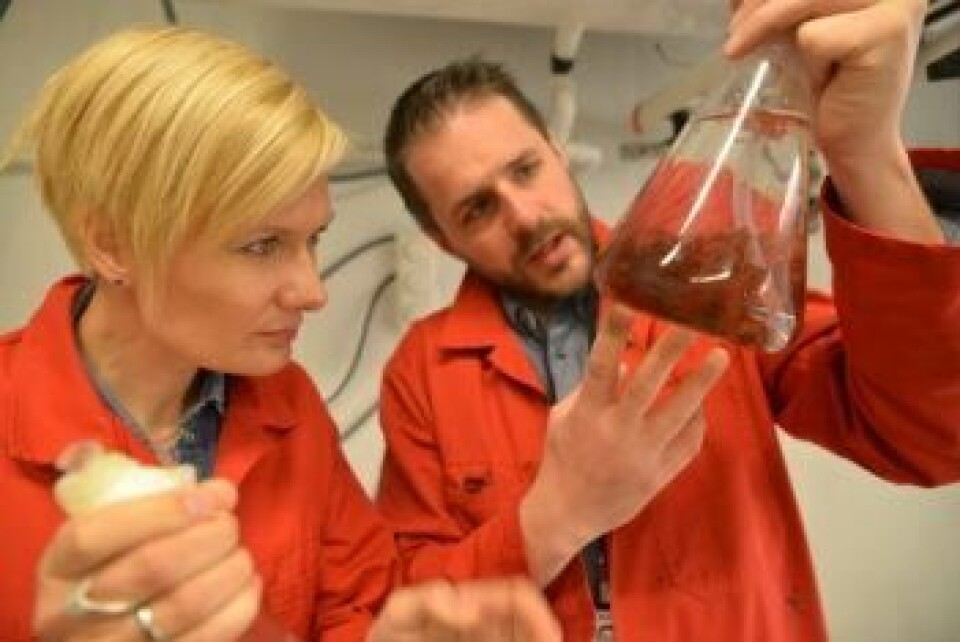
Norwegian “nori” could aid aquafeed industry
Researchers in Trondheim believe that Norwegian-produced red algae could become a key ingredient of aquafeeds.
The idea follows the success of a project to grow a species of Porphyra (Wildemania amplissima), which is known as “nori” in the sushi industry, in laboratory conditions for the first time.
This species has been cultivated in Asia, where it is highly prized, since the 17th century and is now being grown as part of Norway’s “NYMAT” (New Food) project in a joint effort involving SINTEF, Austevoll Seaweed Farm, and Master Chef Ørjan Johannesen.
The project to grow the seaweed, which is sometimes known as “red cellophane” will run until 2017, and is being partly funded by the regional research fund RFF Vestand the Skattefunn scheme.
The project is led by SINTEF researcher Silje Forbord, who believes that Norway has all the attributes needed to be in the forefront of commercial macroalga cultivation, and that Porphyra has great potential as a “superfood” that will tempt Norwegian palates.
“We have extensive experience in the cultivation of different kinds of macroalgae, and our hope is that red cellophane can become a key species in Norwegian aquaculture,” Forbord told the Gemini newsletter. “There are currently about six or seven Norwegian firms engaged in seaweed cultivation, but the process has to be automated to boost profitability.”
According to Forbord, the challenge ahead is to scale up the cultivation process and carry out large-scale production tests under marine conditions.
Superfood or aquafeed?
There are about 70 different species of red Porphyra seaweeds worldwide, at least seven of which can be found on Norwegian waters.
The research team is hoping that, in the near future, locally-sourced Norwegian seaweeds will provide feed for farmed fish. Currently, about 70 per cent of fish feed is derived from Brazilian soya beans.
“Soya beans are rich in protein, but so too are Norwegian red seaweeds. It will probably be some years before we see extensive commercial forests of seaweeds along the Norwegian coast, but I’m convinced that that day will come,” adds NTNU marine biologist Andreas Quale Lavik.






















































